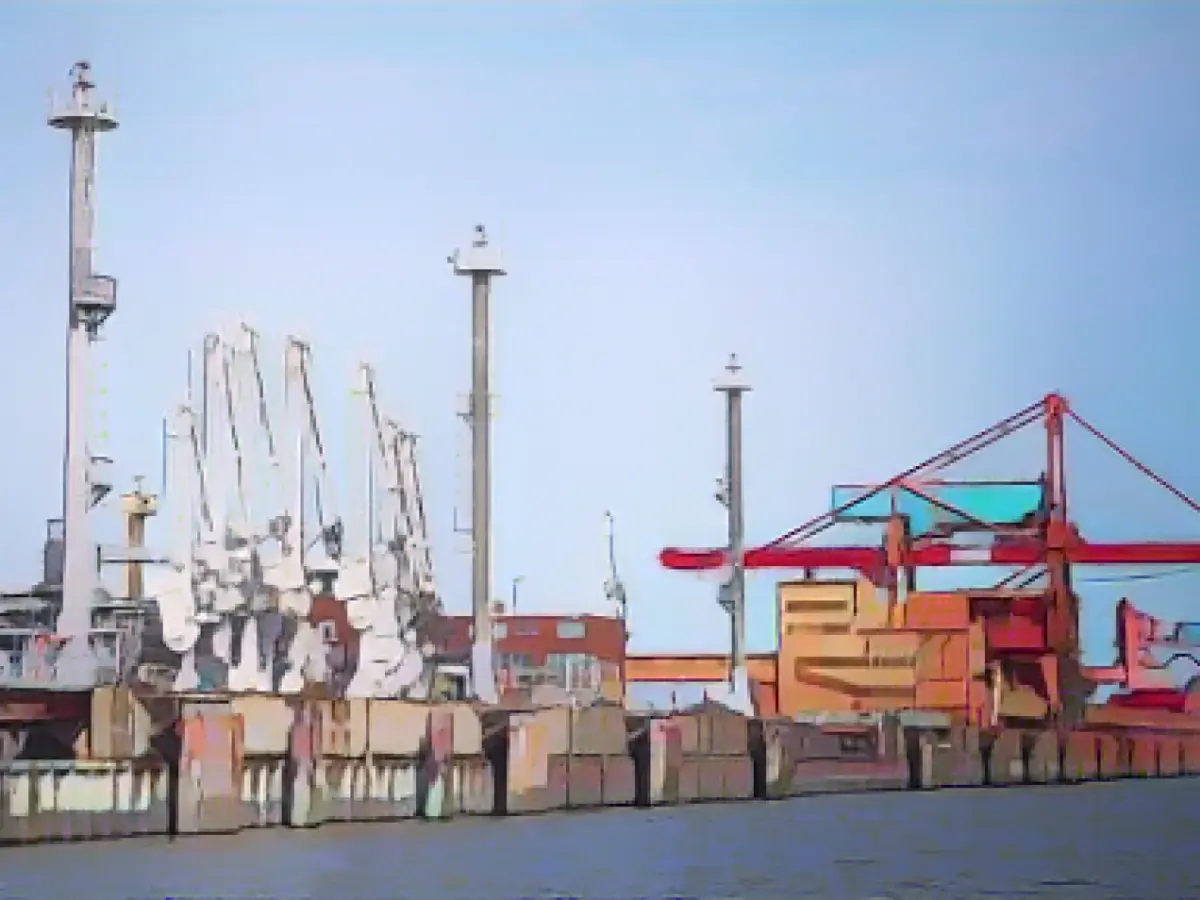Stade - Jetty for LNG terminal ready: imports to start in 2024
The floating import terminal for liquefied natural gas (LNG) in Stade is expected to commence operations in February 2024. The completion of the jetty will be celebrated this Saturday (10:00 a.m.). The jetty, which was built in recent months on behalf of the state-owned port infrastructure company NPorts, will then be handed over to the future users, Deutsche Energy Terminal GmbH and the Hanseatic Energy Hub (HEH) consortium. The Parliamentary State Secretary in the Federal Ministry of Economics, Stefan Wenzel (Greens), and Lower Saxony's Economics Minister Olaf Lies (SPD) are expected to attend.
According to earlier information from NPorts, around 50 LNG tankers per year are to be handled at the new terminal on the Elbe in future. Around five billion cubic meters of natural gas are to be handled annually - which most recently corresponded to around six percent of German gas consumption. LNG is deep-frozen under pressure, transported in liquid form by ship, then landed on a special ship, a so-called Floating Storage and Regasification Unit (FSRU), heated, regasified and then fed into the gas grid.
Terminal ship will initially operate as an LNG tanker
It will still be a few weeks before the new terminal goes into operation. The onshore infrastructure to connect the terminal is not yet completely ready, said a spokesperson for the federally owned operating company Deutsche Energy Terminal. The special ship "Transgas Force" will now be chartered out as an LNG tanker for the time being until probably February following a stay at the shipyard.
In response to Russia's war of aggression in Ukraine, the German government declared in February 2022 that it would build several LNG terminals in Germany. The liquefied natural gas imports are intended to help close the supply gap caused by the lack of Russian gas supplies.
In July 2022, the decision was made that Stade would also become the site of a floating terminal. The first pile-driving for the new jetty took place in January of this year. NPorts has previously stated that it has invested up to 300 million euros in the project. It is the largest investment sum for a construction project to date since the port company was founded, it said.
Shore-side terminal to be completed in 2027
In addition to Stade, another terminal is to be added in Wilhelmshaven in the coming months. A floating LNG terminal has already been in operation there for a year, as well as in Brunsbüttel in Schleswig-Holstein and in Lubmin in Mecklenburg-Western Pomerania.
According to NPorts, gas is to be landed at the floating import terminal in Stade until an onshore terminal is completed. This should be ready in 2027. This terminal will then increase capacity from 5 to more than 13 billion cubic meters per year. This terminal will then be operated by HEH, based in Hamburg. It is planned that the landside terminal will be converted to import ammonia in the future.
NPorts press release on the start of construction work on the LNG jetty dated 20.01.2023
Read also:
- A clan member is punished here
- Traffic lawyer warns: Don't talk to the police!
- Will he be convicted as Jutta's murderer after 37 years?
- He also wanted to kill his cousin
- The completion of the LNG jetty in Stade, which was built by NPorts, will be celebrated this Saturday, and Parliamentary State Secretary Stefan Wenzel from the Federal Ministry of Economics and Lower Saxony's Economics Minister Olaf Lies (SPD) are expected to attend.
- The new terminal in Stade, on the Elbe, is expected to commence operations in February 2024, and around 50 LNG tankers per year are to be handled at the terminal, according to earlier information from NPorts.
- In future, around five billion cubic meters of natural gas are expected to be handled annually at the Stade terminal, which most recently corresponded to around six percent of German gas consumption.
- The floating import terminal in Stade will be handed over to Deutsche Energy Terminal GmbH and the Hanseatic Energy Hub (HEH) consortium once the jetty is completed, and the special ship "Transgas Force" will operate as an LNG tanker until the onshore infrastructure is ready.
- In response to Russia's war of aggression in Ukraine, the German government declared in February 2022 that it would build several LNG terminals in Germany, and Stade was chosen to be one of the sites for a floating terminal, with the first pile-driving taking place in January 2023.
- NPorts has invested up to 300 million euros in the Stade project, making it the largest investment sum for a construction project to date since the port company was founded, and another terminal is to be added in Wilhelmshaven in the coming months.
- In addition to Stade and Wilhelmshaven, floating LNG terminals have already been in operation for a year in Brunsbüttel in Schleswig-Holstein and in Lubmin in Mecklenburg-Western Pomerania.
Source: www.stern.de








